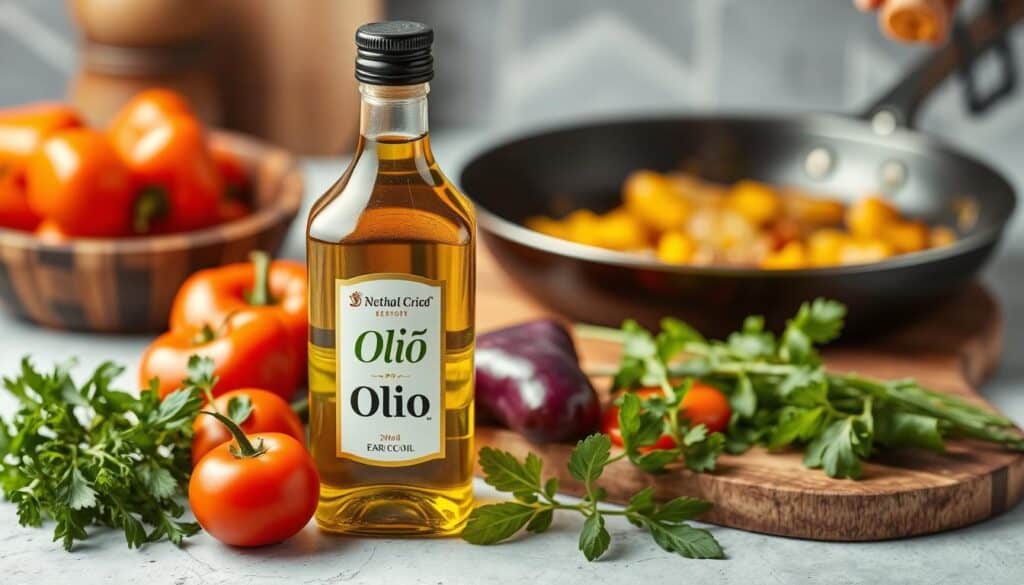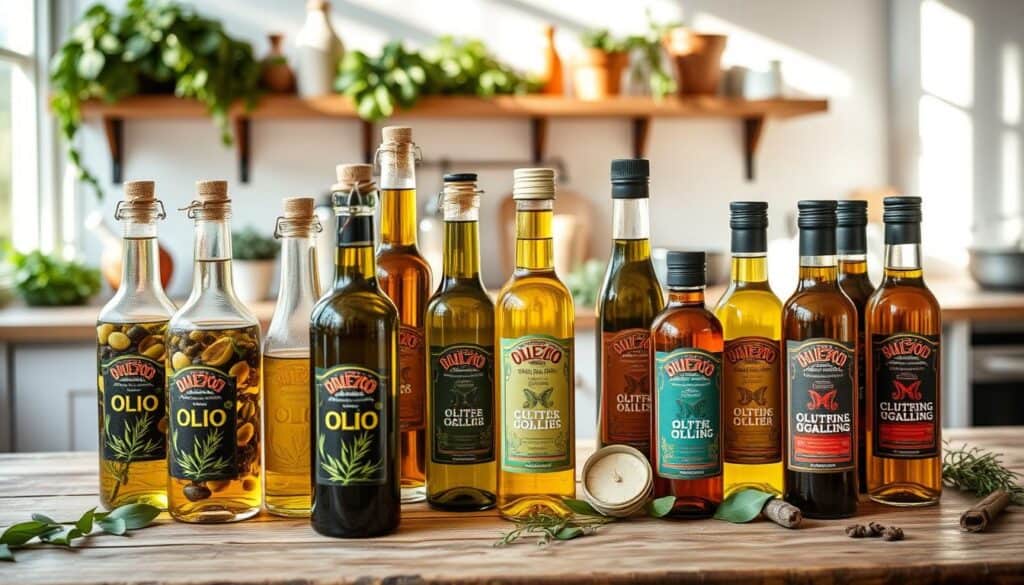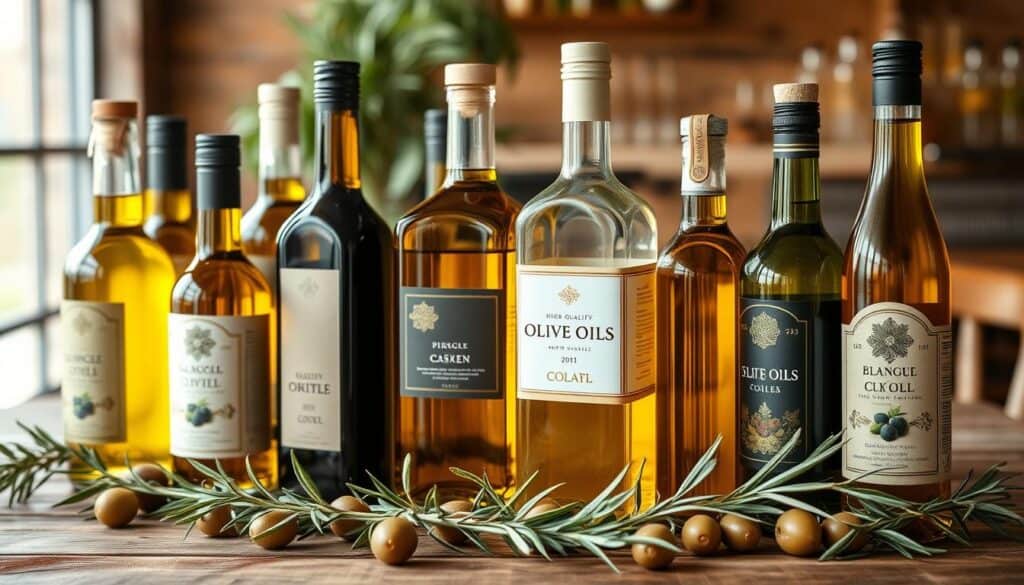Olio, a staple in many cuisines, offers a world of flavors and benefits. With its rich history and numerous health benefits, Olio is more than just a cooking oil; it’s a key to unlocking a healthier, more flavorful lifestyle. Olio oil is a fundamental component in various recipes, and Olio products have become increasingly popular due to their versatility and nutritional value.
From gourmet cooking to hair care, Olio has proven to be a valuable ingredient. The use of Olio oil in cooking can elevate dishes, while Olio products provide numerous health benefits. With about 1/4 cup of Extra Virgin Olive Oil recommended for certain dishes, it’s clear that Olio is an essential component in many recipes.
Olio is not just limited to cooking; its benefits extend to overall well-being. With nutritional benefits such as garlic boosting the immune system and olive oil supporting heart health, it’s no wonder Olio has become a staple in many households. Olio oil and Olio products are a great way to incorporate these benefits into daily life.
Key Takeaways
- Olio is a versatile ingredient with numerous health benefits
- Olio oil is a fundamental component in various recipes
- Olio products provide nutritional value and can elevate dishes
- Gourmet cooking and hair care are just a few areas where Olio is used
- Extra Virgin Olive Oil is a recommended ingredient in many recipes
- Olio supports heart health and can boost metabolism
- Olio is a key to unlocking a healthier, more flavorful lifestyle
What is Olio?
Olio, a term often associated with olive oil, encompasses a wide range of products and uses. Understanding the benefits of Olio is crucial for appreciating its value in both culinary and non-culinary applications. From cooking to hair care, Olio uses are diverse and plentiful. The term “Olio” can refer to various types of oil, but when it comes to Organic Olio, the focus is on high-quality, naturally produced products.
In the context of cooking, Olio benefits include its rich flavor and nutritional value. A dish like Spaghetti aglio e olio, originating from Naples, Italy, showcases the simplicity and elegance of using Olio in traditional recipes. This classic Italian dish is prepared by lightly sautéing sliced garlic in extra virgin olive oil and tossing it with spaghetti cooked in salted water.
When exploring the world of Olio, it’s essential to consider the various types and their uses. Here are some key points to consider:
- Olio can refer to different types of oil, including olive, coconut, and other plant-based oils.
- Organic Olio is produced without the use of synthetic pesticides or fertilizers, ensuring a more natural product.
- Olio benefits extend beyond cooking, with applications in hair care, skincare, and other areas.
| Olio Type | Description | Uses |
|---|---|---|
| Extra Virgin Olive Oil | High-quality, cold-pressed oil | Cooking, dressings, marinades |
| Organic Olio | Naturally produced, without synthetic pesticides or fertilizers | Cooking, hair care, skincare |
The Versatility of Olio in Cooking
Olio oil is a staple in many kitchens, and its uses extend far beyond simple cooking. With its rich, distinct flavor and numerous health benefits, it’s no wonder that Olio has become a favorite among chefs and home cooks alike. From making delicious dressings and marinades to baking, Olio’s versatility is unparalleled.
In the kitchen, Olio can be used in a variety of ways. For example, it can be used to make a simple yet flavorful dressing for salads, or as a marinade for grilled meats and vegetables. Olio skincare benefits are also noteworthy, as its antioxidants and fatty acids can nourish and protect the skin. Additionally, Olio natural remedies have been used for centuries to promote overall health and well-being.
Olive Oil: A Kitchen Staple
When it comes to cooking with Olio, the possibilities are endless. Here are a few ways to incorporate Olio into your cooking routine:
- Use Olio as a finishing oil for soups, stews, and braises
- Make a flavorful salad dressing with Olio and herbs
- Use Olio as a marinade for grilled meats and vegetables
Using Olio in Dressings and Marinades
Olio can be used to make a variety of delicious dressings and marinades. Here is a simple recipe for a classic vinaigrette:
| Ingredient | Quantity |
|---|---|
| Olio oil | 2 tablespoons |
| Red wine vinegar | 1 tablespoon |
| Dried herbs (such as basil and oregano) | 1 teaspoon |

By incorporating Olio into your cooking and skincare routine, you can experience its numerous benefits firsthand. Whether you’re using Olio oil for cooking, Olio skincare, or Olio natural remedies, you can be sure that you’re getting the most out of this versatile and nutritious ingredient.
Health Benefits of Olio
Olio benefits are numerous, and its impact on heart health is particularly significant. With its high levels of monounsaturated fats, Olio uses include reducing inflammation and oxidative stress. In fact, studies have shown that consuming Olio can help lower the risk of heart disease by controlling LDL (“bad”) cholesterol levels while raising HDL (“good”) cholesterol levels.
In addition to its heart health benefits, Olio is also rich in antioxidants, which can help protect against cell damage and reduce the risk of certain diseases. Olio haircare is another area where its benefits shine, as it can help nourish and protect the hair. Some of the key components of Olio that contribute to its health benefits include oleic acid, vitamin E, and vitamin K.
- Reducing inflammation and oxidative stress
- Lowering the risk of heart disease
- Providing antioxidant protection
- Nourishing and protecting the hair
By incorporating Olio into your diet and skincare routine, you can experience these benefits for yourself and enjoy the many advantages of Olio uses.
Different Types of Olio
When it comes to Olio products, the variety can be overwhelming. From Organic Olio to Olio natural remedies, each type has its unique characteristics and uses. Understanding these differences is key to selecting the best Olio for your needs.
Olio natural remedies have been used for centuries due to their health benefits and versatility in cooking. Organic Olio, in particular, is prized for its purity and rich flavor, making it a staple in many kitchens.
Extra Virgin Olive Oil
Extra Virgin Olive Oil is considered the finest grade of olive oil, produced using cold pressing with temperatures below 60 degrees Fahrenheit to preserve antioxidants. It is ideal for cooking and finishing dishes, adding a pure and rich flavor.
Refined Olive Oil
Refined Olive Oil, on the other hand, has a neutral flavor and a higher smoke point, making it suitable for high-heat cooking. However, it lacks the antioxidants and flavor of Extra Virgin Olive Oil.
Flavored Olio Varieties
For those looking to add a twist to their dishes, flavored Olio varieties are available. These can range from infused olive oils with herbs and spices to olive oils blended with other ingredients for unique flavor profiles.

Whether you’re looking for Organic Olio for its health benefits or exploring the world of Olio natural remedies, understanding the different types of Olio is essential. By choosing the right Olio for your needs, you can enhance your cooking and reap the rewards of this versatile and healthy ingredient.
| Type of Olio | Description | Uses |
|---|---|---|
| Extra Virgin Olive Oil | Finest grade, cold-pressed | Cooking, finishing dishes |
| Refined Olive Oil | Neutral flavor, high smoke point | High-heat cooking |
| Flavored Olio Varieties | Infused or blended with other ingredients | Adding unique flavors to dishes |
How to Choose Quality Olio
When it comes to selecting high-quality Olio oil, there are several factors to consider. To ensure you’re getting the best Olio for your needs, whether it’s for cooking, Olio skincare, or Olio haircare, it’s essential to read labels effectively and understand the importance of the harvest date.
A key aspect of choosing quality Olio is knowing the difference between various types of olive oil. For instance, extra virgin olive oil must have a maximum of 1% acidity, indicating a stringent standard for quality. Organic farming for olive oil production also ensures the absence of toxic substances and pesticides in the oil, making it a great option for those looking for a natural and healthy choice.

Understanding Quality Indicators
Some quality indicators to look out for when choosing Olio oil include the presence of a protected denomination of origin (DOP) or protected geographic indication (IGP), which have strict specifications for cultivation, harvesting, and packaging. Additionally, cold-pressed olive oil should not exceed 30°C during extraction to maintain its properties unaltered.
When it comes to Olio skincare and Olio haircare, using high-quality Olio oil is crucial. Look for Olio oil that is rich in antioxidants and has a pleasant viscosity without a greasy aftertaste. By choosing the right Olio oil, you can experience its full benefits and enjoy healthy, glowing skin and hair.
Key Takeaways
- Read labels effectively to ensure you’re getting high-quality Olio oil
- Understand the importance of the harvest date and look for recent harvests
- Choose Olio oil that is rich in antioxidants and has a pleasant viscosity
- Consider organic farming and protected denominations of origin for added quality assurance
By following these tips, you can make an informed decision when choosing quality Olio oil for your needs, whether it’s for cooking, Olio skincare, or Olio haircare.
Cooking Techniques with Olio
Cooking with Olio can be a delightful experience, offering numerous Olio benefits and Olio uses in various dishes. One of the most popular techniques is sautéing and pan-frying, which brings out the natural flavors of the ingredients. To achieve the perfect sauté, it’s essential to heat the Olio to the right temperature, then add the ingredients and cook for a short duration, usually around 10 minutes.
Another technique is drizzling Olio over dishes, which can add a rich, velvety texture and enhance the flavors. This method is ideal for salads, pasta, and vegetables, and can be combined with other ingredients like garlic and herbs to create a delicious and healthy meal. Olio natural remedies can also be incorporated into cooking, such as using Olio as a base for sauces and marinades.
Some popular Olio-based dishes include Spaghetti Aglio e Olio, which relies on the quality of extra virgin olive oil, and various pasta recipes that utilize Olio as a primary ingredient. These dishes not only showcase the Olio benefits but also demonstrate the versatility of Olio uses in cooking. By mastering these techniques and exploring different Olio natural remedies, home cooks can elevate their culinary skills and enjoy the numerous benefits of cooking with Olio.
Olio Around the World
Olio oil has become a staple in many cuisines around the world, with its versatility and health benefits making it a popular choice for cooking and skincare. From Mediterranean to Asian cuisine, Olio products are used in various ways, showcasing its global significance.
In the Mediterranean region, Olio oil is used extensively in cooking, dressings, and marinades. The use of Olio skincare products is also prevalent, with many people incorporating it into their daily skincare routines. Similarly, in Asian cuisine, Olio oil is used in stir-fries, sauces, and as a finishing touch for various dishes.
Global Olio Trends
With the increasing awareness of food waste and sustainability, Olio has become a key player in reducing waste and promoting a circular food supply chain. The company’s mission to halve food waste in homes and local communities by 2030 has resonated with people worldwide, making it a global phenomenon.
As Olio continues to expand its reach, its impact on local communities and the environment is becoming more significant. With a global community of 7 million users, Olio is not only reducing food waste but also promoting social cohesion and mental well-being. Whether it’s through cooking with Olio oil or using Olio skincare products, the benefits of Olio are being felt worldwide.
Common Misconceptions About Olio
Despite its popularity, Olio is often surrounded by misconceptions. Many people believe that the quality of Olio is determined by its color, but this is not the case. In reality, factors such as the type of olives, time of harvest, and production process all play a role in determining the quality of Olio. Understanding the benefits of Olio and its various uses can help to debunk these common myths.
One of the most common misconceptions about Olio is that it is not suitable for high-heat cooking. However, this is not entirely true. While it is true that Olio has a lower smoke point than some other oils, it can still be used for sautéing and pan-frying. In fact, Olio haircare benefits from the use of Olio in hair treatments, as it can help to nourish and protect the hair.
Here are some common misconceptions about Olio:
- Olio is only suitable for low-heat cooking
- The quality of Olio is determined by its color
- Olio is not suitable for hair care
It’s also important to note that the price of Olio does not always correlate with its quality. Some expensive oils may be priced based on branding or packaging, rather than the quality of the oil itself. By understanding the benefits of Olio and its various uses, consumers can make informed decisions about which Olio to choose.
| Type of Olio | Smoke Point | Uses |
|---|---|---|
| Extra Virgin Olio | 374°F (190°C) | Cooking, hair care |
| Refined Olio | 410°F (210°C) | High-heat cooking |
Storing Olio for Maximum Freshness
To fully savor the rich flavors and valuable health benefits of Olio, proper storage is paramount. Keeping Olio products in ideal conditions can extend their shelf life and maintain the precious antioxidants, vitamins, and aromatic compounds that make Olio a culinary and wellness powerhouse.
The key to preserving Olio is minimizing exposure to light, air, and extreme temperatures. Organic Olio should be stored in dark, airtight containers, preferably between 59°F and 68°F, away from direct sunlight. Refrigeration can also help Olio retain its Olio natural remedies for longer, but it’s essential to allow the oil to return to room temperature before use to fully enjoy its vibrant flavors.
With thoughtful storage and timely consumption, you can ensure your Olio products remain fresh, delicious, and packed with nourishing goodness, elevating every dish and wellness routine.
